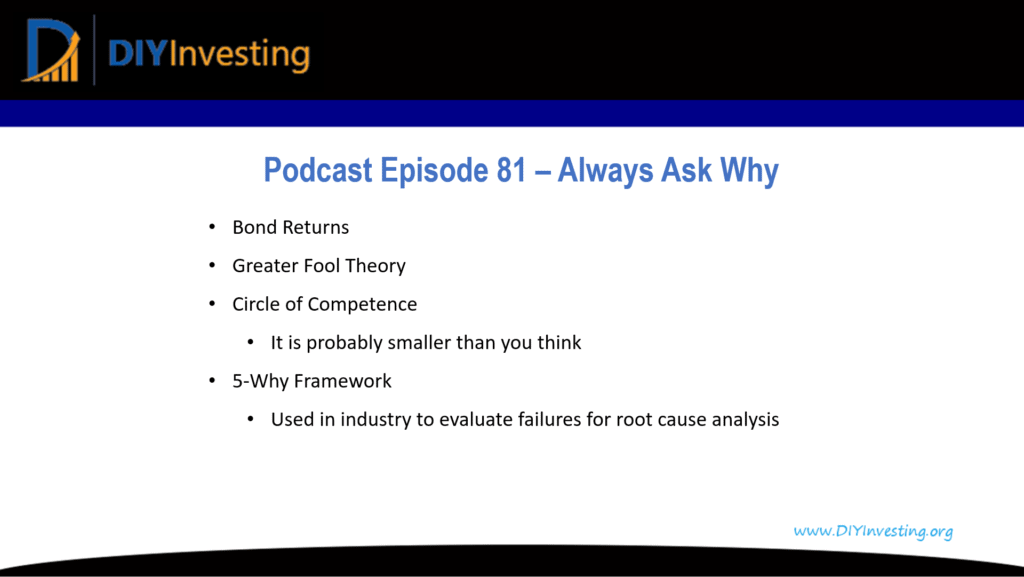Mental Models discussed in this podcast:
- Discount Rate
- Greater Fool Theory
- Circle of Competence
- 5-Why Framework
Please review and rate the podcast
If you enjoyed this podcast and found it helpful, please consider leaving me a rating and review. Your feedback helps me to improve the podcast and grow the show’s audience.
Follow me on Twitter and YouTube
Twitter Handle: @TreyHenninger
YouTube Channel: DIY Investing
Support the Podcast on Patreon
This is a podcast supported by listeners like you. If you’d like to support this podcast and help me to continue creating great investing content, please consider becoming a Patron at DIYInvesting.org/Patron.
You can find out more information by listening to episode 11 of this podcast.
Show Outline

Bond Returns
In the aggregate, bond returns cannot exceed the coupon rate of the bond. Your interest rate earned sets the maximum expected rate of return on that investment. Any potential for gains above this threshold is purely speculative in nature.
Greater Fool Theory
- In today’s bond bubble, the only way to justify purchasing bonds in a portfolio is a dependence on the greater fool theory.
- If you want or expect high returns from your bonds, then you hope that others are foolish enough to buy them from you before they mature.
Circle of Competence
Your circle of competence is probably smaller than you think.
5-Why Framework
This framework is used in the industry to evaluate failures for a root cause analysis. Basically, don’t stop with understanding a problem after only asking “Why?” once. You need to dig deeper. Ask “Why?” five times, to reach down to deeper levels of explanation.
Find the root cause of a problem, not simply the surface contributing causes.
Summary:
Investors should always ask why when evaluating investments. This includes understanding the underlying reasons for their investing strategy, why they earn an excess return, and the edge of their circle of competence.
